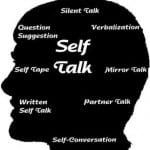Developing and maintaining situational awareness at an emergency scene can be a very challenging task. Scenes are often stressful, complex, time-compressed, and complicated with rapidly-changing conditions. Responders have lots of information to process and many tasks to perform. And, sadly, situational awareness isn’t always the forefront on their minds. Under such conditions, meta awareness may help.
Awareness About Awareness
Meta awareness is a term I derived from the work of developmental psychologist, John Flavell, who coined the term “metacognition” to describe a phenomenon where a person has cognition about cognition or, stated another way, thinking about thinking. Applied to situational awareness, the term “meta awareness” would mean you are actually (in a conscious state) thinking about your situational awareness.
As noted previously, it may not be intuitive (or automatic) for responders to be consciously thinking about their situational awareness while fulfilling all their duties and responsibilities at an emergency scene. If a responder is able to elevate awareness to the conscious level, then it (awareness) becomes as important in the mind of the responder as anything else they may be doing or thinking about.
How to Use Meta Awareness
Before we go down the path of how to develop Meta awareness, it may be appropriate (for those new to the SAMatters community) to offer a working definition of situational awareness.
Situational awareness is an individual’s ability to perceive information (clues and cues) about what is happening in his or her environment and to understand the meaning of those clues and cues (in the context of how time is passing) and then be able to make accurate predictions about future events (in time to avoid bad outcomes).
Meta awareness is a purposeful focus (at a conscious level) of how you are developing and maintaining your situational awareness. One way you can accomplish this is by employing “self-speak”.
Intrapersonal Communications
Do you ever talk to yourself? Of course you do. We all do. This internal, personal dialog is known as intrapersonal communications or “self-speak”. Self-help gurus teach their clients to use positive self-speak to maintain a conscious awareness of what is important or what to focus on in order to accomplish goals. The same concept can be applied in the formation and maintenance of situational awareness.
An Example
Here’s an example of how meta awareness can help in forming and maintaining situational awareness. The scenario I will use is a company officer arriving on the scene of a residential dwelling fire. I will play the role of the company officer and share how I would deploy self-speak:
Ok, Rich. Remember your breathing technique to keep calm (breathe in for 4 seconds, hold for 4 seconds, out for 4 seconds, pause for 4 seconds).
My situational awareness starts with perception. I must conduct a size-up to gather factual information about what is happening. In my 360-degree size-up I am going to use my eyes and ears to gather clues and cues. The most important pieces of information I need to gather include:
1. Smoke & fire condition – What is the smoke and fire color, volume, velocity, and density?
2. Environment – Is wind or other weather playing a factor?
3. Building construction & decomposition – What is this structure made out of? Am I dealing with a contents fire or a fire that is compromising structural components?
4. Speed – How fast is this fire burning? How fast is the structure being weakened? How fast are conditions changing?
5. Rescue potential – What is the likelihood there is a save-able life in the structure? (With consideration for #1-4 above.)
6. Resources – What is the quality and quantity of resources I have available to me at this moment in time?
I need to use this information to form my understanding of what is happening to help me make an action plan. (pause and think).
Now it’s time to make some decisions:
Critical Decision #1: Go or no-go. Based on the information I gathered and what I understand about what is happening, should we go interior or not?
Critical Decision #2: What size hose line should we deploy to support critical decision #1?
Critical Decision #3: If we are going to go interior, what is our best point of entry? What are our alternate ways out?
Now it’s time to predict the future outcome:
Benchmark: What do I expect to be the outcome of my action plan?
Deadline: What is a reasonable deadline to accomplish this benchmark? (With consideration to #1-6 above.)
How much time should it take for the benchmark to be achieved? (The answer to this takes into consideration the critical factors mentioned above: Smoke, Flame, Construction, Decomposition, Speed, Rescue, and Resources).
Only after I have completed this process will we take action. While it seems like it would take a long time to work through this process, it really doesn’t. This can be accomplished in 1-2 minutes, depending on how long it takes to complete the size-up.
Chief Gasaway’s Advice
 There are many barriers that will try to impact your ability to form and maintain situational awareness – pre-arrival lens, task fixation, mission myopia, stress, urgency, culture, and peer-pressure (to name a few).
There are many barriers that will try to impact your ability to form and maintain situational awareness – pre-arrival lens, task fixation, mission myopia, stress, urgency, culture, and peer-pressure (to name a few).
There are multiple stimuli competing for your attention as well – crewmembers looking for orders, radio traffic to be answered, bystanders/homeowners to be addressed, etc. On top of this, there is a fire burning, which means there are the strategic objectives – saving lives and property and ensuring crew/scene safety.
With consideration for the complexity of an emergency scene, it can be easy to lose track of critical information and it can be easy to forget just how important developing and maintaining your situational awareness is.
Talk to yourself and use meta awareness to help you develop and maintain your situational awareness. Of course, it’s also a great idea to talk with fellow crew members about the same criteria. This helps ensure the team is on the same page.
Action Items
1.  Discuss how all crew members can use interpersonal communications to form situational awareness.
Discuss how all crew members can use interpersonal communications to form situational awareness.
2. Practice using self-talk during training sessions.
3. Make a habit of asking fellow crew members: “What’s on your mind?” as a way to encourage sharing self-speak.
_____________________________________________________________
Now, for the first time ever, you can receive the content of this valuable safety programs in the NEW Situational Awareness Matters Virtual Academy… at your own pace – from home or while you are on-duty.
_____________________________________________________________
Share your comments on this article in the “Leave a Reply” box below. If you want to send me incident pictures, videos or have an idea you’d like me to research and write about, contact me. I really enjoy getting feedback and supportive messages from fellow first responders. It gives me the energy to work harder for you.
Thanks,

Email: Support@RichGasaway.com
Phone: 612-548-4424
Facebook Fan Page: www.facebook.com/SAMatters
Twitter: @SAMatters
LinkedIn: Rich Gasaway
YouTube: SAMattersTV
iTunes: SAMatters Radio




SA is such a critical component of the command and leadership profile of emergency responders.
I will most definitely join the SAM community, and look to enhance my development in this area.
Steve,
Thank you for supporting my mission and for providing feedback.
Rich
Great article, Rich! It’s helpful for others to briefly summarize such concepts as it saves time in having to pull out the journal articles or other sources and then paraphrase into concise simple language!
Keep up the good work!
Jeff
Wow awsome thanks. For sharing this should be heard on the news or newspaper truth let it be out there
Pingback: 10 Ways To Master The Time In Between Shots | Golf Keola Life
Pingback: Meta-awareness: Belajar Melampaui Kesadaran | Setapak Aksara
Pingback: A Mental Health Home Toolkit to Rid Yourself of Pandemic Stress - Re:Set
This information is very useful and I plan to put it to use! Thank you for the wisdom.
Pingback: Dream Journaling Promotes Meta Awareness – The Dream Recovery System